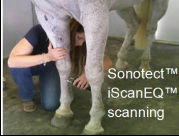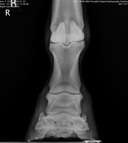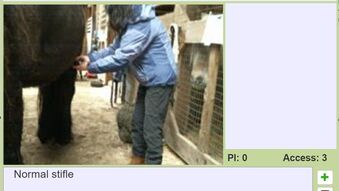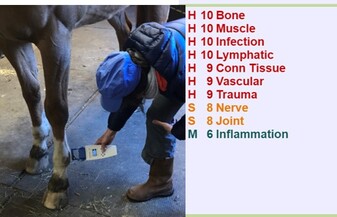
VetSii's SonotectTM systems
Detect and assess sites of physiological dysfunctions
including inflammation, injury and pain using a patented,
non-invasive acoustic sensor technology named Sonodetection.
Detect and assess sites of physiological dysfunctions
including inflammation, injury and pain using a patented,
non-invasive acoustic sensor technology named Sonodetection.
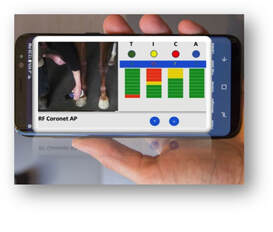
The SonotectTM System accesses signals emitted by activity within abnormal tissues which can provide diagnostic content. The iScanEQ solution is engineered to query the body and elicit, convey, and analyze these results that represent their biophysical origins.
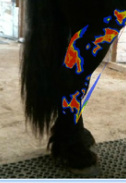
Sii Systems: based in biophysics
The theory of the SonotectTM iScanEQ signal content is that it is measuring the pressure oscillations of tensile properties and cyclic activity associated with abnormal status.
These are biophysical, mechanical activities of dysfunction; internal forces that can generate
low frequency sound waves. These "markers" represent the status of the emitting tissues.
The theory of the SonotectTM iScanEQ signal content is that it is measuring the pressure oscillations of tensile properties and cyclic activity associated with abnormal status.
These are biophysical, mechanical activities of dysfunction; internal forces that can generate
low frequency sound waves. These "markers" represent the status of the emitting tissues.
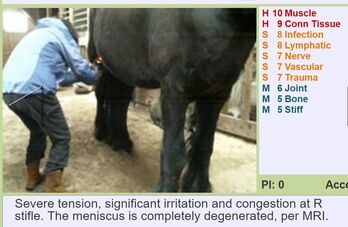
Beyond the designation of abnormal conditions such as
inflammation, trauma, and infection, SonotectTM research
has developed further differentiation of tissue types such as
muscle, nerve, blood vessels and connective tissue. Their severity
on a 10 point scale is plotted for ease of use in clinical
applications.
This unique SonotectTM signature profiling suggests its capability
for providing the first direct "reading" of abnormal status.
inflammation, trauma, and infection, SonotectTM research
has developed further differentiation of tissue types such as
muscle, nerve, blood vessels and connective tissue. Their severity
on a 10 point scale is plotted for ease of use in clinical
applications.
This unique SonotectTM signature profiling suggests its capability
for providing the first direct "reading" of abnormal status.
 Vet Identified Sites .................... Blinded data
Vet Identified Sites .................... Blinded data
Sonodetection research has indicated that there is a clear separation between normal and abnormal signals. Reliability, reproducibility, and statistical findings have been evaluated in human studies over the past 12 years.
The equine study presented here shows iScanEQTM results from a group of horses whose sites were identified by experienced veterinarian after lameness exam as compared with the signals from a group of horses who were scanned by third parties blinded to the status of the sites.
Statistical analysis of this data shows a strong correlation between veterinarian assessment of abnormality and device-coded abnormality of the sites obtained in a scan done blind to the condition of the horse. Analyses of variance show similarities between means that result from coding through physical exam, especially palpation/lameness , and whether the device-coded sites as normal and abnormal.
The equine study presented here shows iScanEQTM results from a group of horses whose sites were identified by experienced veterinarian after lameness exam as compared with the signals from a group of horses who were scanned by third parties blinded to the status of the sites.
Statistical analysis of this data shows a strong correlation between veterinarian assessment of abnormality and device-coded abnormality of the sites obtained in a scan done blind to the condition of the horse. Analyses of variance show similarities between means that result from coding through physical exam, especially palpation/lameness , and whether the device-coded sites as normal and abnormal.
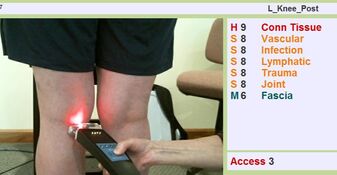
Human iScanTM and SiiScanTM applications have been successful in identifying locations of problems such as hidden infection, traumatic stress reactions, tensional stress, vascular congestion, inflammation, and other tissue dysfunctions/ They are "invisible" to usual methods of evaluating the body's structural findings such as X-Ray, MRI, and Ultrasound.
With SonotectTM, these sources of pain, debilitation, and physical compromise are brought to light and analyzed. Diagnosis is more fully informed through understanding both the local condition and the participants throughout the body.
With SonotectTM, these sources of pain, debilitation, and physical compromise are brought to light and analyzed. Diagnosis is more fully informed through understanding both the local condition and the participants throughout the body.

